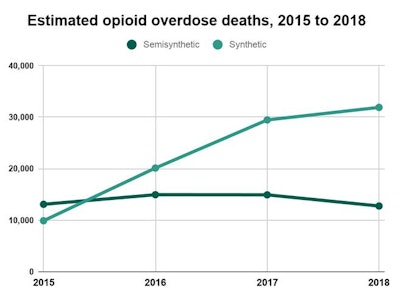
The number of drug overdose deaths in the U.S. dropped for the first time since 1990, according to preliminary data from the U.S. Centers for Disease Control and Prevention (CDC). The data suggest that steps to curb the opioid epidemic may be working.
Drug overdose deaths decreased by 5.1% from 2017 to 2018, the data show. Deaths attributed to oxycodone, hydrocodone, and other semisynthetic opioids also fell year over year.
“This crisis developed over two decades, and it will not be solved overnight.”
"While the declining trend of overdose deaths is an encouraging sign, by no means have we declared victory against the epidemic or addiction in general," stated Alex Azar, secretary of the U.S. Department of Health and Human Services (HHS), in a press release. "This crisis developed over two decades, and it will not be solved overnight."
Opioid prescriptions -- including those from dentists -- have been declining in recent years, which may contribute to the downward trend in overall drug deaths.
Deaths associated with semisynthetic opioids, which include many commonly prescribed opioid analgesics, decreased from 14,926 in 2017 to an estimated 12,757 in 2018. However, overdose deaths from synthetic opioids, including fentanyl, continued to skyrocket.

Drug overdose deaths also varied greatly by state. Alaska and South Dakota saw overdose deaths decrease by 25% or more, while the percentage of overdose deaths spiked by more than 10% in Delaware, Missouri, and Vermont.
The CDC cautioned its data is preliminary, so final overdose death counts may be higher than the estimated number. Nevertheless, Secretary Azar is optimistic efforts to curb opioid abuse and misuse are working.
"The latest provisional data on overdose deaths show that America's united efforts to curb opioid use disorder and addiction are working," he stated. "Lives are being saved, and we're beginning to win the fight against this crisis."



















